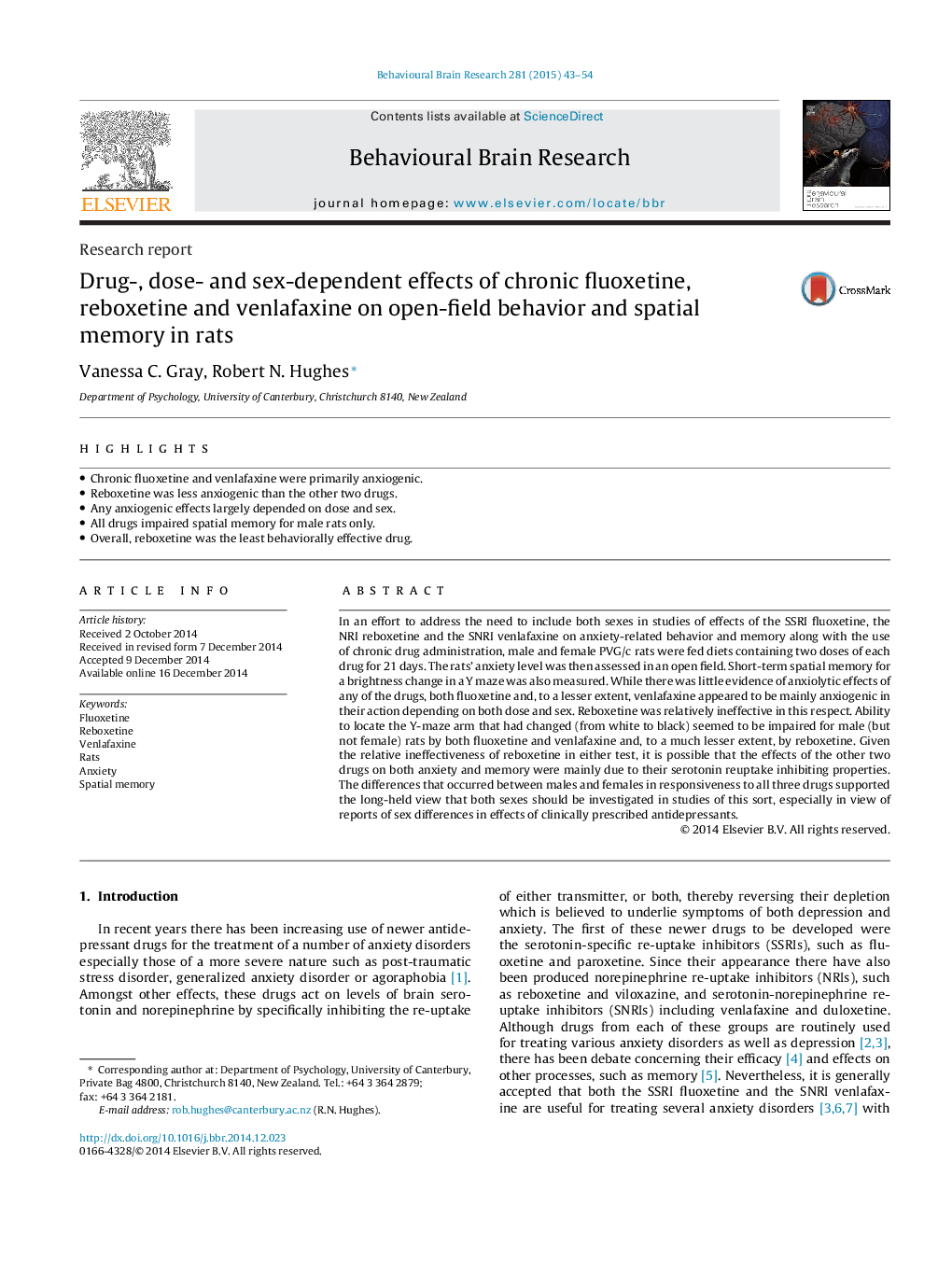| Article ID | Journal | Published Year | Pages | File Type |
|---|---|---|---|---|
| 6256956 | Behavioural Brain Research | 2015 | 12 Pages |
â¢Chronic fluoxetine and venlafaxine were primarily anxiogenic.â¢Reboxetine was less anxiogenic than the other two drugs.â¢Any anxiogenic effects largely depended on dose and sex.â¢All drugs impaired spatial memory for male rats only.â¢Overall, reboxetine was the least behaviorally effective drug.
In an effort to address the need to include both sexes in studies of effects of the SSRI fluoxetine, the NRI reboxetine and the SNRI venlafaxine on anxiety-related behavior and memory along with the use of chronic drug administration, male and female PVG/c rats were fed diets containing two doses of each drug for 21 days. The rats' anxiety level was then assessed in an open field. Short-term spatial memory for a brightness change in a Y maze was also measured. While there was little evidence of anxiolytic effects of any of the drugs, both fluoxetine and, to a lesser extent, venlafaxine appeared to be mainly anxiogenic in their action depending on both dose and sex. Reboxetine was relatively ineffective in this respect. Ability to locate the Y-maze arm that had changed (from white to black) seemed to be impaired for male (but not female) rats by both fluoxetine and venlafaxine and, to a much lesser extent, by reboxetine. Given the relative ineffectiveness of reboxetine in either test, it is possible that the effects of the other two drugs on both anxiety and memory were mainly due to their serotonin reuptake inhibiting properties. The differences that occurred between males and females in responsiveness to all three drugs supported the long-held view that both sexes should be investigated in studies of this sort, especially in view of reports of sex differences in effects of clinically prescribed antidepressants.
